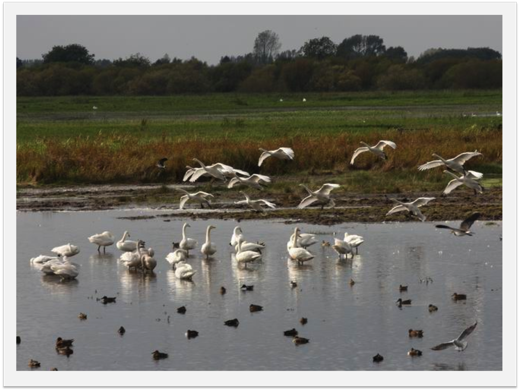|| Science Article |
At less than the width of your outstretched palm, pied flycatchers travel vast distances, traversing several thousand kilometers in a single migration cycle. These birds spend the winter in western Africa and breed in Europe and parts of Asia. They prey on insects while in flight and enjoy munching on caterpillars and berries. They prefer oaks over other trees, and as they perch on favored branches, their songs herald the richness of spring.
But global warming carries a different tune.
The natural migratory signals that prompt the pied flycatcher has become too fast for even the agile songbird to catch up. For millennia, these signals were flawlessly synchronized with the abundance of caterpillars in the pied flycatcher’s spring habitat. But climate change has advanced the period when caterpillars abound such that by the time flycatchers arrive—bone-tired and weary from Africa—the resources that will allow them to regain their strength, court, breed, and raise their young, are gone.
Christiaan Both and his team have been studying pied flycatchers in the Netherlands for 20 years and have noted the telling decline among birds that migrate too late. Research show that worldwide, the earlier warming in spring has prompted plants to flower, trees to bud, insects to come in sight, and most migratory birds to arrive earlier as well. In the Netherlands, caterpillars appear in rhythm with the budding of oak trees. Based on Both’s 20-year study, the population of caterpillars now peak 16 days earlier than it did two decades ago. Today, some pied flycatchers arrive just in time during this peak season—a critical period since caterpillars are the main sustenance of newly-hatched pied flycatchers.
But global warming carries a different tune.
The natural migratory signals that prompt the pied flycatcher has become too fast for even the agile songbird to catch up. For millennia, these signals were flawlessly synchronized with the abundance of caterpillars in the pied flycatcher’s spring habitat. But climate change has advanced the period when caterpillars abound such that by the time flycatchers arrive—bone-tired and weary from Africa—the resources that will allow them to regain their strength, court, breed, and raise their young, are gone.
Christiaan Both and his team have been studying pied flycatchers in the Netherlands for 20 years and have noted the telling decline among birds that migrate too late. Research show that worldwide, the earlier warming in spring has prompted plants to flower, trees to bud, insects to come in sight, and most migratory birds to arrive earlier as well. In the Netherlands, caterpillars appear in rhythm with the budding of oak trees. Based on Both’s 20-year study, the population of caterpillars now peak 16 days earlier than it did two decades ago. Today, some pied flycatchers arrive just in time during this peak season—a critical period since caterpillars are the main sustenance of newly-hatched pied flycatchers.
But many do not. This is because migration signals in Africa have not changed as clearly as they have in the temperate regions in the north. Both’s team has found out that in general, pied flycatchers are arriving too late, causing a catastrophic population decline of 90 percent in areas where caterpillar numbers peak the earliest. This finding agrees with data gathered from different breeding grounds across Europe. It also supports other research that indicate a sharp decline in second broods (rearing a second batch of hatchlings) among other bird species such as the great tit. In the journal Nature, Both and his colleagues wrote, “"Mistiming as a result of climate change is probably a widespread phenomenon, and here we provide evidence that it can lead to population declines."
Pied flycatchers are a sight to behold but it is their song which compels people in Europe to build open-fronted nest boxes in their yards and gardens. The migratory birds readily adapt to these human-built nests but can they adapt in time to human-caused global warming?
Animal Migration
Many species of mammals, fish, insects, and birds follow seasonal migrations. Animals migrate in response to climate, abundance of food, and reproduction factors. Some migration patterns involve a lifetime to complete such as that followed by the Pacific salmon. Some involve irregular movements, like those of African grazing animals which follow no regular route. Others are round-trip, involving a journey from one location into another, then back again. Most migratory birds follow this pattern.
In birds, migration ensures that during the longer summer days, they have more hours of daylight to hunt, forage, or feed their young. It also ensures that they have more food sources during the season. As the daylight period shorten and food supplies dwindle in autumn, migratory birds are prompted—both by genetic and environmental cues—to head towards warmer regions close to the tropics, where the daylight period is relatively constant and where their food sources have already recovered in number or volume. Prior to migrating, some changes occur in the birds’ physiology and behavior. Molting, a change in feather structure or plumage may occur. Intense fattening, as the body’s response to energy requirements during the journey, also occurs in some species. Individuals then form large flocks and practice their flight formations. Brought about by hormonal changes, migratory birds also undergo a period of restlessness called zugunruhe. During this period, many bird species sing.



